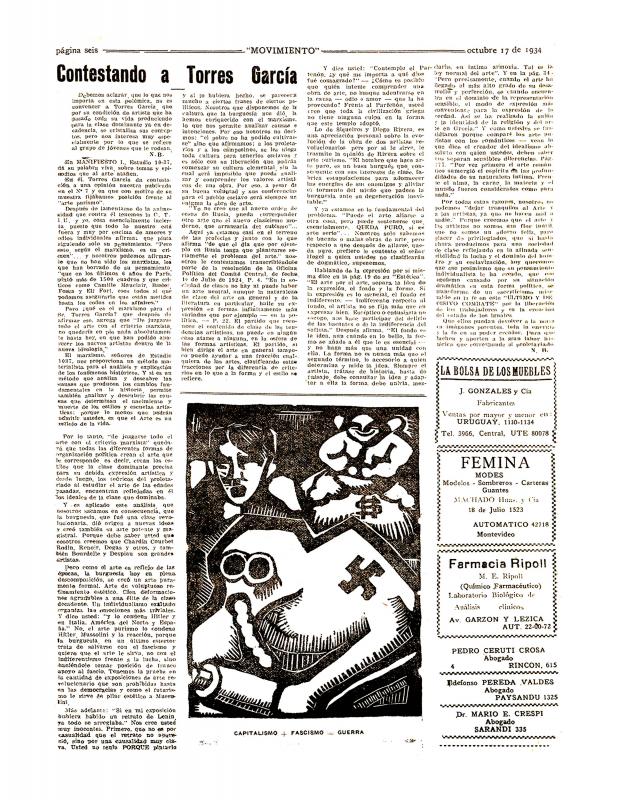This article by Norberto Berdía (1900–83) was published in May 1934, just weeks after Joaquín Torres García (1874–1949) arrived in Montevideo (the artist landed on April 30)—indication of the speed with which the struggle over hegemonic positions in the cultural field ensued in an atmosphere inclined to debate between groups of artists. Organizations like the Confederación de Trabajadores Intelectuales del Uruguay (CTIU), and even the Escuela Taller de Artes Plásticas (ETAP), became embroiled. [On the exchange of accusations between the confederation and Torres García, see in the ICAA digital archive, also by Norberto Berdía, “Contestando a Torres García” (doc. no. 1208175) and “El arte de Torres García” (doc. no. 1208154)].
A painter, Berdía studied at the Círculo de Bellas Artes in Montevideo. In Buenos Aires, he was a disciple of painters Giambiagi and Gómez Cornet. In the context of the CTIU, Berdía attempted to open up a debate in which “bourgeois art” (or “pure art,” as it came to be called) was pitted against “proletarian art.” Berdía claimed that Torres García did not understand that, under capitalism, artists are the first ones to suffer in situations of economic crisis. In his view, “what is saved in a capitalist system has to be invested in the manufacture of weapons for war.” Berdía seems to argue, in other words, that the money that Torres García stopped earning when his work was no longer being purchased in Paris went to the production of armaments. The grounds for that argument based on Marxist reasoning are shabby, though Berdía would attempt to flesh them out in later articles, mostly published in 1934.


